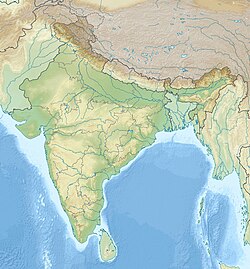
Back Sankissa Catalan Sankissa Spanish Sankissa French संकिशा Hindi Szankissza Hungarian Sankissa Italian サンカーシャ Japanese 산카샤 Korean သင်္ကဿနဂိုရ်ပြည် Burmese සංකස්ස Singhalese
Uttar Pradesh, India | |
 Elephant capital at Sankissa, one of the Pillars of Ashoka, 3rd century BCE  Detail of the abacus. | |
| Location | Farrukhabad district, Uttar Pradesh, India. |
|---|---|
| Coordinates | 27°20′02″N 79°16′16″E / 27.33389°N 79.27111°E |
| Type | Settlement |
| Pilgrimage to |
| Buddha's Holy Sites |
|---|
 |
Sankissa (also Sankasia, Sankassa and Sankasya) is an ancient city in India renown for the descent of Gautama Buddha from the Tushita heavens where he taught his mother before landing at Sankissa. Considered among the eight great pilgrimage sites, it was thirty leagues from Sravasti.[1] Around 300 years after the Gautama Buddha's Mahaparinirvana, king Ashoka visited and built a Pillar of Ashoka of which the elephant capital survives. He also built a stupa and a temple commemorating the Buddha's descent from the heavens. The ruins of the stupa are still present, as is a temple of Vishari Devi and an ancient staircase.[2]

Sankissa has ruins of ancient Buddhist monasteries, and other monuments from Buddhist and Hindu traditions. The Briton Alexander Cunningham explored the site in 1842.
Sankissa is now identified with Sankisa Basantapura on the north bank of the Ikkhumati river (Kalinadi), between Kampil and Kannauj. It is twenty-three miles west of Fatehgarh, twenty-five south of Kaimganj and forty-five north of Kannauj, in the Farrukhabad district of the Uttar Pradesh state of India.
© MMXXIII Rich X Search. We shall prevail. All rights reserved. Rich X Search

